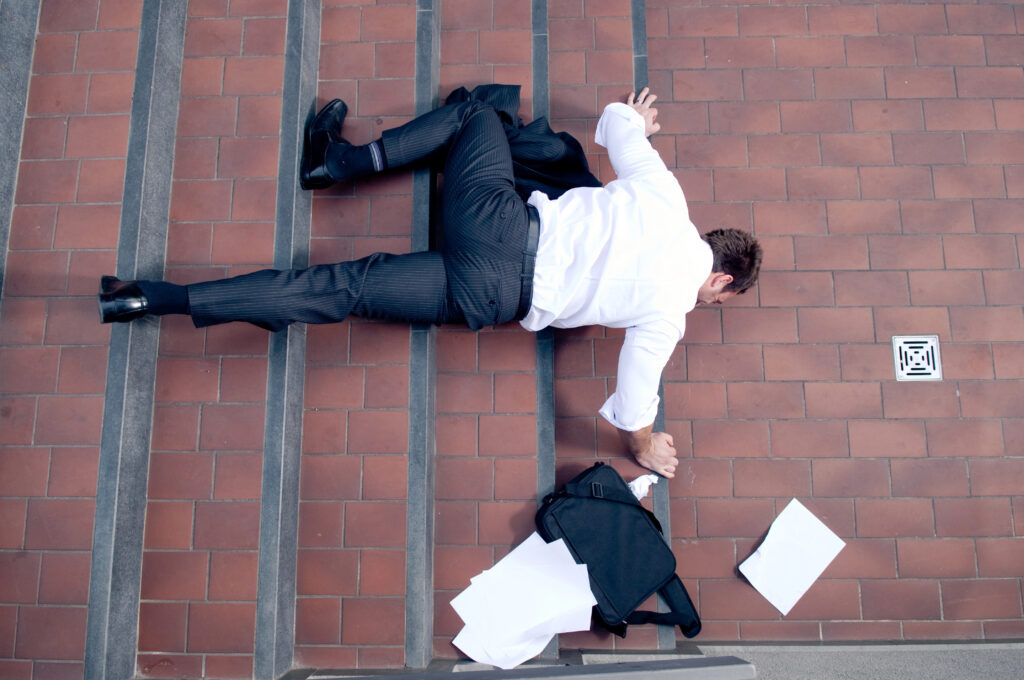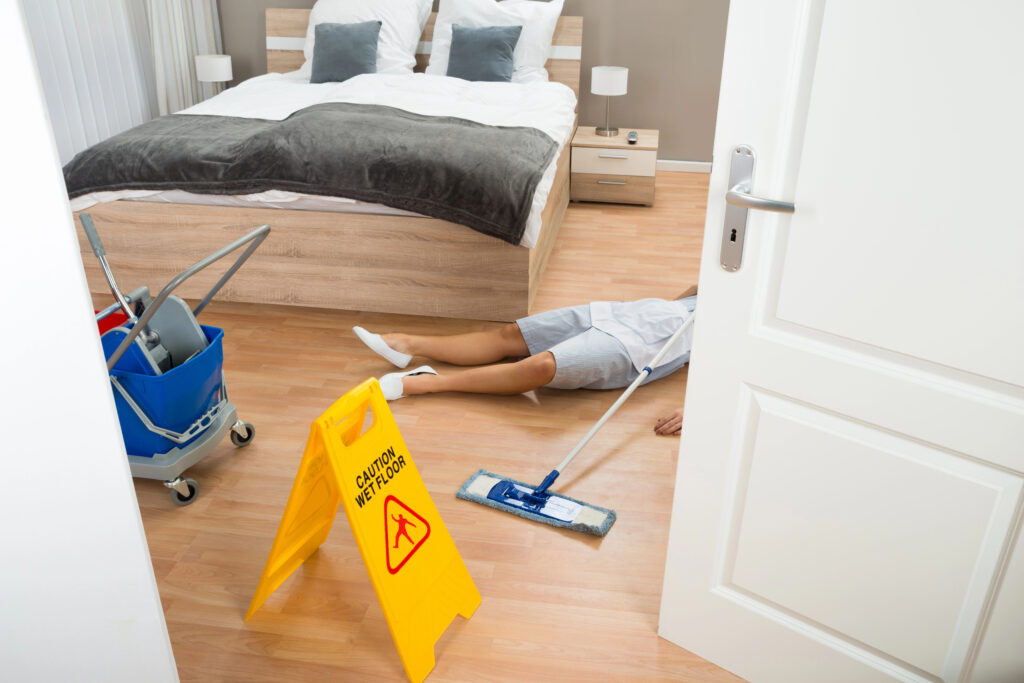What to Do If You Slip on Wet Pavement
Slipping on wet pavement can lead to painful, often serious injuries—especially when it happens unexpectedly in a public area, parking lot, or outside a commercial property. These types of accidents frequently occur during wet weather, when slippery surfaces and hazardous conditions make everyday walking much riskier. If you or a loved one has been injured in a fall accident caused by wet pavement, it’s essential to take the right steps to protect your health and preserve your legal options.
In New York, property owners have a duty to maintain safe walking areas, even during rain or wet conditions. If they fail to address unsafe conditions that lead to an accident, they may be held responsible for your injuries and related medical expenses.

Immediate Steps to Take After a Slip on Wet Pavement
1. Seek Medical Attention
After a slip and fall accident, your first priority should always be your health. Even if injuries seem minor, it’s important to seek medical attention to rule out internal injuries or damage that might not be immediately visible. Injuries such as sprains, fractures, or concussions often require extensive medical care or ongoing physical therapy.
Prompt treatment not only supports your recovery—it also creates important medical records that will support your injury claim.
2. Document the Scene and Conditions
If you’re physically able, take photos or videos of the wet pavement, nearby surroundings, and any visible signs of slippery conditions or unsafe conditions, such as:
- Accumulated rainwater or oil on the surface
- Poor drainage areas in parking lots
- Lack of warning signs or caution cones
- Uneven pavement or broken surfaces
This evidence can help demonstrate the hazardous conditions that contributed to your fall and will be crucial if you decide to file a legal claim.
3. Report the Incident
If your fall occurred on commercial property, notify the property manager or business owner immediately and request that they document the incident. If it happened in a public area, you may need to notify a city agency. Always keep a copy of any reports or correspondence related to the accident.
4. Contact a Personal Injury Attorney
An experienced attorney can help determine if negligence played a role in your accident and advise whether you’re entitled to compensation. Property owners who ignore slippery surfaces, fail to warn pedestrians, or do not take reasonable steps to reduce risk during wet conditions may be legally liable.
Your attorney will:
- Investigate the conditions at the time of the accident
- Identify any violations of safety standards
- File a claim for medical costs, lost wages, and pain and suffering
Slip-and-fall injuries can quickly lead to a financial burden, especially if you’re unable to work or require long-term treatment. A legal professional can guide you through the process and help establish responsibility for the accident.
Understanding the Risks of Wet Pavement Falls
When a pedestrian slips on a wet pavement surface, it can cause injuries ranging from bruises and sprains to serious injuries like spinal trauma or broken bones. These injuries may require extensive medical care, and in some cases, long-term therapy or assistance devices.
Key risk factors include:
- Worn shoes with poor tread depth
- Sudden movements while walking across slippery surfaces
- Oil, grease, or debris on pavement
- Sloped walking areas during rain
- Reduced traction on polished or tiled outdoor walkways
Walking at a slower pace and maintaining a safe distance from other pedestrians can help minimize the risk, but it’s ultimately the property owner’s job to maintain walkways during wet weather.

Filing a Slip-and-Fall Claim
To file a successful fall accident claim, you must show that:
- The property owner knew or should have known about the hazardous conditions
- They failed to correct or warn about the danger
- Their negligence directly caused your injury
You may be entitled to compensation for:
- Medical expenses
- Lost income from missed work
- Long-term treatment like physical therapy
- Emotional and physical pain
- Other financial losses related to your recovery
Because these accidents often result from external weather conditions, proving negligence may require an attorney to analyze accidents on similar surfaces, weather records, and maintenance logs.
Learn more about what to do if you slip on wet pavement. Call Greenstein & Pittari, LLP at (800) 842-8462 to schedule your free, no-obligation consultation. You can also reach us anytime through our contact page. Let us help you take the first step toward justice and recovery.
FAQs: Wet Pavement Slip-and-Fall Accidents in NYC
What should I do immediately after slipping on wet pavement?
Seek medical attention, document the accident scene, report the incident, and contact a personal injury lawyer. Prompt action helps preserve your rights.
Can I sue if I slipped on wet pavement outside a store?
Yes, if the store failed to address known slippery surfaces or didn’t place warning signs, they may be held liable for unsafe conditions on their property.
What if it was raining when I fell—can I still file a claim?
Yes. Even during wet weather, property owners must take reasonable steps to ensure public safety, such as installing non-slip surfaces or providing warning signs.
How can an attorney help with my case?
An attorney can determine if negligence occurred, gather evidence, and file your claim. They’ll also handle negotiations with insurance companies to pursue maximum compensation.
What injuries are common after slipping on wet pavement?
Common injuries include wrist or hip fractures, head trauma, and back injuries. Some may require extensive medical care, including surgery or rehabilitation.
